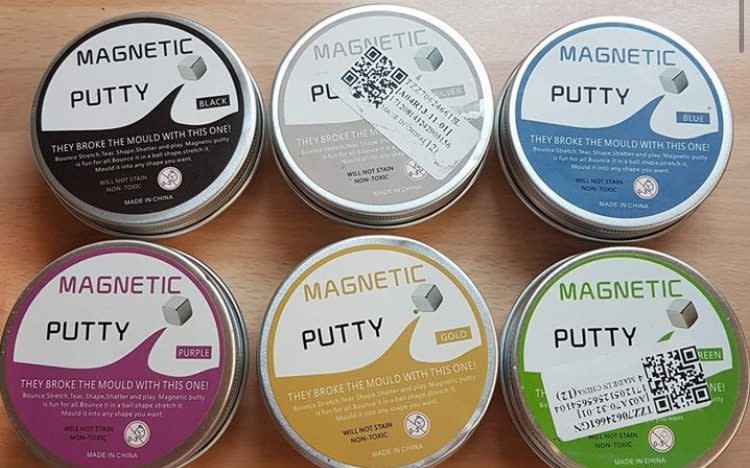Cases of children swallowing magnets have increased five-fold in five years, doctors say

Magnets should be subject of a new public health campaign as cases of children swallowing them increased five-fold in the space of five years, leading paediatricians have said.
Admissions at four major children's hospitals for in London rose from five in 2016 to 25 last year for magnet ingestion, which can cause tissue damage, inflammation of the abdominal wall and in the most serious case prove fatal.
Doctors say increasing use of "high-powered" magnets found in children's toys, which they say are sometimes not clearly labelled, has helped fuel an increase in cases.
In a letter published in the Archives of Disease in Childhood, paediatricians said: "As a regional network of paediatric surgeons, we are extremely concerned with the recent rise in cases we have seen with foreign body ingestion and, in particular, magnets.
“We recommend a strong public health campaign to increase awareness of the dangers of small, powerful magnets, especially those intended for toys.” In March, an NHS presentation on patient safety stated magnet ball ingestion had led to 40 admissions at 11 major trauma centres last year.
In these cases 89 per cent of children required major abdominal surgery, which has led to calls from health professionals to restrict or ban the use of high-strength magnetic toys and piercings in the UK.
The EN71-1 regulations govern the safety of magnets, including high-strength versions in toys.
However the authors of the study claim that “most manufacturers do not display [warnings]”, and age suitability limits are difficult to enforce.
It comes amid a trend of girls in their early teens buying fake tongue piercings that contain two strong magnetic parts, which are used to hold the accessory in place.
In 2018 two teenage girls in Nottinghamshire required major bowel surgery after accidentally swallowing the piercings, while earlier this year a 12-year-old boy required six hours of life-saving surgery after he swallowed 54 magnetic balls.
A spokesman for the British Toy and Hobby Association said: “The British Toy and Hobby Association has been raising concerns about powerful magnets and the rise in accidents to enforcement officials for almost a year. Magnets can be used in toys but only if they are encased in a hard material that will not break under durability testing so the magnet cannot come loose.
“The casing must be too large for a child to swallow. These measure prevent the sort of accidents being reported. We are extremely concerned however that there are strong magnets being sold by online sellers – these are squares of magnetic balls, often brightly coloured and advertised, wrongly, as toys.
“Children are watching online videos of people making sculptures from these magnets and asking parents to purchase them, with neither the parent nor child aware they are not toys and are extremely dangerous.
“The BTHA would like to see these products classified as toys in order that the manufacturers change the design to make them safe or they are removed from the market because of the harm they are causing.”

